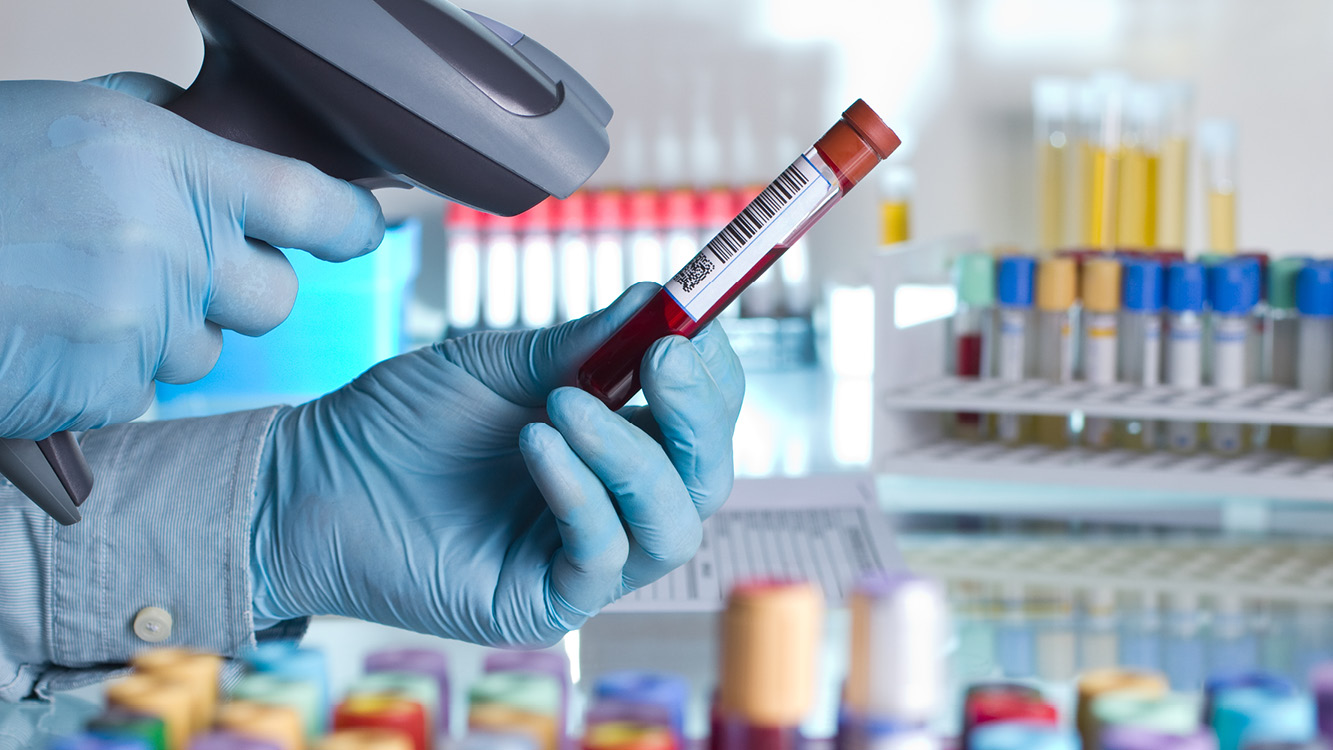How TSPs Can Transform Hospital Safety and Efficiency
Emerging identification technologies are shaping the future of hospital check-in. Here’s why technology solutions providers (TSPs) are key to...
BlueStar's diverse portfolio offers unparalleled access to premium products and services that drive business growth and success. From state-of-the-art hardware to advanced software solutions, our portfolio is designed to empower businesses with the tools they need to thrive in today's competitive landscape.
Our vertical-based content focuses on different industry technologies, solutions, and insights.
A true VAD offers top-notch pick, pack and ship services, and provides programs and services that add value to the distributed products that increase their value or worth.
The BlueStar Difference3 min read
BlueStar May 12, 2025 6:15:48 AM EDT

How European TSPs can drive patient safety and efficiency with barcoding solutions for blood traceability.
Blood traceability is critical to modern healthcare, impacting patient safety and operational efficiency. For technology solution providers (TSPs) serving the UK healthcare sector, understanding best practices in barcoding for blood traceability is essential to delivering solutions that meet stringent regulatory requirements and enhance clinical outcomes.
Why Blood Traceability Matters
Ensuring that every unit of blood is accurately tracked from donation to transfusion is vital. Mistakes in blood identification or administration can have life-threatening consequences. Barcoding technology has emerged as the gold standard for achieving comprehensive traceability, reducing human error, and supporting compliance with national and international standards.
Here are five best practices in barcoding for blood traceability:
Global Standards: The ISBT 128 standard is widely adopted for blood, tissue, and organ identification, enabling interoperability across healthcare systems and borders. This standard ensures that every blood product is labelled with unique identifiers, including donor number, blood type, product code, batch number, and expiration date. The global shift toward standardised labelling is accelerating. For example, Australia will require all fresh blood product component labels to include the ISBT 128 2D DataMatrix by November 2025, with full phase-out of legacy Codabar barcodes by March 2029. This transition provides a clear roadmap for other countries, including the UK, to adopt and implement global standards for improved traceability.
Label Quality: Labels must be durable, use approved adhesives (such as those compliant with ISO 3826), and remain legible throughout the product’s lifecycle. This prevents misidentification and ensures data integrity.
GS1 Standards: In the UK, GS1 barcodes are increasingly used to link blood products to patient records and supply chain systems, supporting the NHS eProcurement strategy and improving traceability. The importance of robust labelling is underscored by recent data: in 2023, licensed blood establishments reported 5,864 biological product deviations to the FDA, with quality control and distribution issues accounting for over 40% of cases. These figures highlight the critical need for standardised, high-quality labelling to reduce errors and enhance patient safety.
Implementing real-time barcode scanning across all stages of blood handling ensures end-to-end traceability and error reduction. Begin by integrating dual verification protocols at the point of care: clinicians should scan both the patient’s wristband and the blood bag’s barcode before transfusion. This step directly prevents mismatches, a critical safeguard given that barcode scanning reduces transfusion errors by up to 90%. Extend scanning to every handoff in the workflow – donation, processing, storage, and administration – to create a digital audit trail. Each scan updates the system in real time, enabling rapid recalls during contamination alerts or regulatory investigations.
For efficiency, adopt advanced scanners like Zebra’s Blood Bag Parse+, which captures multiple barcodes in a single scan and auto-populates required fields, minimising training demands and manual input. Ensure scanners are compatible with NHS infrastructure and prioritise devices that function reliably in wireless and non-wireless environments to maintain workflow continuity.
Automating data flow between barcode systems and EHRs eliminates manual entry errors and enhances compliance. When a blood product is scanned, critical details (e.g., donor ID, expiration date) should auto-populate into the patient’s EHR and Laboratory Information Management Systems (LIMS). This integration ensures every action – from collection to transfusion – is timestamped and logged, simplifying audits and meeting standards like ISBT 128.
For UK providers, solutions should be aligned with NHS eProcurement strategies using GS1 standards to link blood products to supply chain platforms and patient records. Before administration, real-time EHR updates also alert clinicians to discrepancies, such as expired units or incompatible blood types. To maximise adoption, work with EHR vendors to customise interfaces that match hospital workflows and provide staff training on using integrated systems for tasks like documenting vitals or adverse reactions. This approach safeguards patients and future-proofs systems against evolving regulatory requirements.
Benefits for Healthcare Providers and TSPs
Enhanced Patient Safety – Barcoding reduces the risk of transfusion errors, such as administering the wrong blood type, by enforcing rigorous identification and matching protocols at every stage. Automated systems provide an auditable trail, enabling rapid investigation and recall in the event of adverse reactions or product recalls.
Operational Efficiency – Automated scanning streamlines workflows, reducing the time spent on manual data entry and label verification. Real-time inventory management helps prevent stockouts and promptly removes expired products from circulation.
Regulatory Compliance and Cost Savings – Barcoding supports compliance with NHS and international standards, such as ISBT 128 and GS1, which are increasingly mandated in UK healthcare procurement. Improved accuracy and efficiency reduce waste, lower the risk of costly errors, and free up staff time for patient care.
Key Considerations for TSPs
For technology solution providers aiming to serve the UK healthcare sector with blood traceability solutions, several crucial factors warrant careful attention:
Conclusion
For UK TSPs, delivering robust barcoding solutions for blood traceability is both a responsibility and an opportunity. By adhering to best practices – standardised labelling, real-time scanning, and seamless integration with health records – TSPs can help healthcare providers achieve the highest safety, efficiency, and compliance standards. The result is a safer, more reliable blood supply chain that protects patients and supports the future of digital healthcare.

Emerging identification technologies are shaping the future of hospital check-in. Here’s why technology solutions providers (TSPs) are key to...

Healthcare providers need your expertise to implement reliable systems that collect vital patient data.

Explore the demand for solutions that improve patient-facing processes.